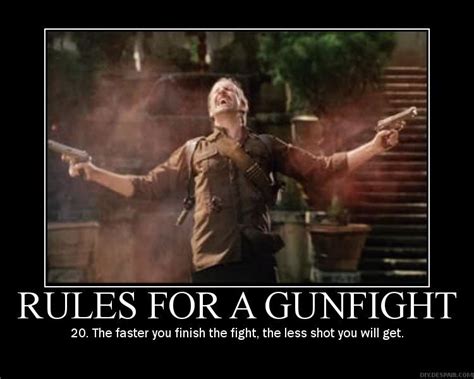
I want to address a real-world situation that most people have common misconceptions about: a gunfight. There’s a wide spectrum of individuals who have the notion of, “This will never happen to me,” while on the other end, is that one guy who is almost always seemingly new to firearms and shooting, and boasts an attitude of, “I wish a motherf—er would.” I’m here to tell you today – you’re both wrong. It can happen to you, and when it does, you most certainly will not wish a motherf—er would. We’ll get deeper into the psychology of this soon, but we’re going to keep it simple for now.
Most of you lack training. Those who have some measurable amount of training have never experienced a gunfight. Those who have will tell you that you’ll never know how you’ll respond to such a threat until you experience it yourself. One a general basis, practice makes permanent. How you train, from your basic shooting fundamentals (like how you hold/grip/shoulder your firearm, squeeze your trigger, etc.) to the type of training you choose to pursue (personal self defense, rifle/pistol tactics, defense in the home), all of this will have an impact on how that situation is going to play out. There are, of course, outside variables that effect these too, it’s really a complicated formula that can probably be written as the following: Your skill + your reasoning + your training = Your capability + weather + liability (objects or bystanders) + Threat level and skill = Outcome. That’s just scratching the surface.
Onto the psycho/physiology side of things. It’s safe to assume most of us have heard of the Flight or Fight syndrome. In a nutshell, it is a theory that when the body and brain are confronted with a stressful situation, the person will either try to remove themselves entirely from the threat or they will stand their ground to deter the threat. For an example, we will use the Green-Yellow-Amber-Red-Black scheme. Green and yellow represent little to no stress on the the human body and psyche (maybe bar fight-like activity at the peak of this scale). Amber would represent an optimal state of being to respond to the threat – the body has elevated levels of adrenaline but the mind in still in control and able to take decisive actions while still thinking clearly. Red would represent a point in the response where decisions aren’t being made entirely rationally or other effects (such as tunnel vision) would begin to be apparent. Black would represent that neither the body or the mind are working together. Realistically, this person would not be able to function under this type as stress and would most likely lose the fight.
It probably comes as no surprise that more specialized sections of militaries around the world train themselves mentally and physically, so when the time comes, they can function the way they need to in order to come out on top. They want to be able to fight at the Amber stage of the stress-color scheme. Even police forces train in such a manner so they can effectively respond to the calls that our brave police officers must handle on a daily basis. One could argue that it could be more severe for them than for military forces, seeing as how intelligence is used (somewhat accurate, I suppose) whereas a police officer or unit has a brief explanation from a dispatcher before they walk into a potentially dangerous situation. Even a routine traffic stop can turn deadly based on the outside factor of the subject’s behavior.
One last note I want to make before closing is how most gunfights are won. It is not through death or incapacitating another that victory is typically achieved. In fact, these actions are typically performed during the green and yellow phases. Most gunfights are won before a weapon is even drawn: through situational awareness. Whether you’re at the mall, a restaurant, or even picking up a child from school, being aware of your surrounding and looking for pre-ambush cues (suspicious behaviors), you can remove yourself and friends or family members toward safety, eluding the threat altogether. However, situational awareness is not a cure-all; unfortunately, there are just bad people in the world who wish to do as much harm in as little amount of time as possible. And in such case, I would only ask you to remember this:
The only unfair gunfight is the one you lose.
Guest Writer: Raymond Williams
Raymond Williams resides in Not California with his family. He has an extensive background in private security and currently works in several fields within that industry. He attends Sonoran Desert Institute while pursuing an AS is Firearms Technology. His hobbies include writing shooting and working on firearms. He can also be found at the nearest piano or cello when he is not crying himself to sleep over being literally not, not figuratively, a redheaded stepchild.